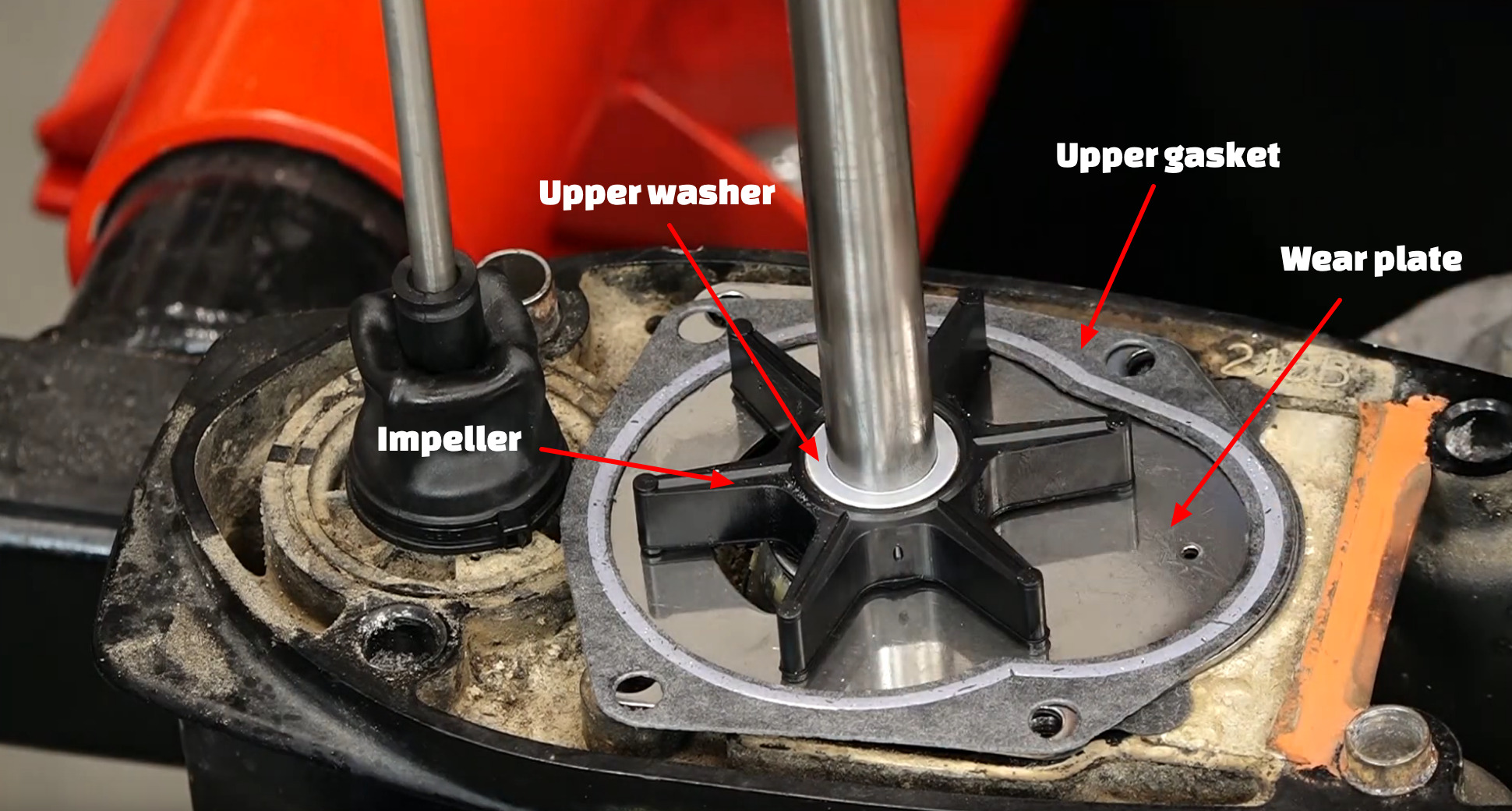Yamaha Water Pump Impeller: Keeping Your Engine Cool

Ever felt that pang of anxiety when your Yamaha outboard starts running hotter than usual? A failing water pump impeller might be the culprit. This small but mighty component plays a vital role in your engine's cooling system, and understanding its function, maintenance, and replacement is key to a smooth boating experience.
Imagine this: you're out on the water, sun shining, the perfect day for boating. Suddenly, your engine sputters and overheats, ruining your idyllic escape. This nightmare scenario can often be traced back to a worn-out Yamaha water pump impeller. Preventing this requires understanding the importance of regular impeller checks and timely replacements.
The Yamaha water pump impeller, a rubber component within the water pump housing, acts as the heart of the cooling system. It draws cooling water from the surrounding environment and circulates it through the engine block, preventing overheating. Over time, this impeller, constantly exposed to heat and friction, can wear down, crack, or become damaged, hindering its ability to effectively cool the engine.
Replacing a Yamaha outboard water pump impeller is a relatively straightforward process, but neglecting it can lead to significant engine damage. A malfunctioning impeller can cause overheating, leading to warped engine components, decreased performance, and potentially catastrophic engine failure. This underlines the importance of understanding the signs of a failing impeller and taking proactive measures to maintain it.
Recognizing the signs of a failing Yamaha water pump impeller is crucial. These include overheating, reduced water flow from the tell-tale, steam from the engine, and a high-pitched whine from the water pump. If you notice any of these symptoms, it's crucial to inspect the impeller and replace it if necessary. Early detection and replacement can save you from costly repairs down the line.
The history of the outboard motor impeller dates back to the development of more powerful outboard engines which required more robust cooling systems. The impeller became a critical component in ensuring these engines could operate efficiently without overheating. Over time, impeller designs have improved, with Yamaha incorporating durable materials and efficient designs to maximize performance and lifespan.
One benefit of regular Yamaha water pump impeller replacement is preventing catastrophic engine failure. By replacing the impeller before it fails, you avoid the risk of overheating, which can warp engine components and cause irreversible damage. Another advantage is maintaining optimal engine performance. A properly functioning impeller ensures efficient cooling, allowing the engine to run smoothly and deliver peak power. Finally, regular replacement prolongs engine life by minimizing wear and tear caused by overheating and stress.
A simple action plan for impeller maintenance includes inspecting the impeller at least once a year or every 100 hours of operation, whichever comes first. Replace the impeller every two years or 200 hours of operation, regardless of its appearance. Always keep a spare impeller on board in case of unexpected failure. This proactive approach ensures your engine stays cool and performs reliably.
Advantages and Disadvantages of Regular Yamaha Water Pump Impeller Replacement
| Advantages | Disadvantages |
|---|---|
| Prevents costly engine repairs | Requires some time and effort |
| Maintains optimal engine performance | Involves a small cost for the impeller |
| Extends engine lifespan |
Five best practices for Yamaha impeller replacement include: (1) Using genuine Yamaha impellers for optimal fit and performance. (2) Lubricating the impeller with glycerin or dish soap for easy installation. (3) Inspecting the impeller housing for debris or damage. (4) Properly aligning the impeller key with the driveshaft keyway. (5) Verifying proper water flow after replacement.
Frequently asked questions include: How often should I replace the impeller? What are the signs of a failing impeller? Can I replace the impeller myself? What type of impeller do I need for my Yamaha outboard? Where can I purchase a replacement impeller? How do I install a new impeller? What tools do I need for impeller replacement? How can I prevent impeller damage?
Tips and tricks for impeller maintenance include storing the boat with the lower unit in the down position to prevent the impeller from drying out and cracking. Flushing the engine with fresh water after each use, especially in saltwater environments, can help prevent corrosion and impeller damage. Regularly inspecting the tell-tale stream for consistent water flow is a simple way to monitor impeller health.
In conclusion, the Yamaha water pump impeller is a small but crucial component that ensures the health and longevity of your outboard engine. Regular inspection and replacement, along with understanding the signs of a failing impeller, are essential for preventing costly repairs and maintaining peak performance. By following the best practices and tips outlined in this article, you can ensure your Yamaha outboard continues to provide reliable and enjoyable boating experiences for years to come. Don't wait for a problem to arise; invest in preventative maintenance and enjoy the peace of mind that comes with knowing your engine is running cool and efficiently. Take action today and ensure your next boating trip is trouble-free.
Navigating the journey i am mom chapter 14 insights
Upgrade your style with discounted jcpenney mens sneakers
Embrace the dark side reading the villains nurture manga













